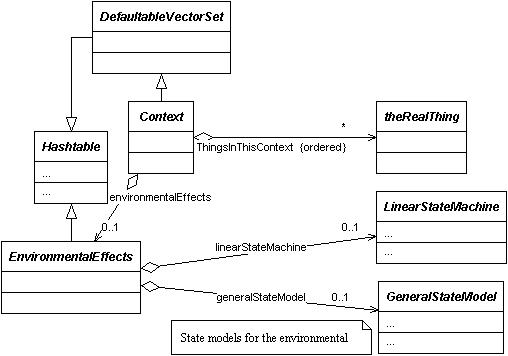Contexts are used to describe a local envronment. The most important environment is the local context of the player. Other contexts include contexts for NPCs and areas of effect for thigs such as explosions.
For example a room would be a context. If there is a light source in the room, the context states that the room is lit.
- A context is used to describe the limit of vision.
- A context is used to describe and determine the area of effect of a capability.
- A context is used to determine the environmental effects.
Object Model
Contexts are used in the object model to sectionalise the things to limit processing the whole model each time an action is performed. They are also used as place holders for current environmental effects. The effect is assumed to apply to the whole context.

For example a room would be a context. If there is a light source in the room, the context states that the room is lit.
The context is a set of lists if things. Each context is a items with in the set. Each thing is an item in the list. Every game window has it's own default context which is the first item in the set. The contexts do not contain internal pointers, even though one context can clearly contain another context. This containment must be determined from analysing the contexts of the things contained within things in the current context.
Each context has a set of environmental effects. The environmental effects are represented by state models. These will be used by the environmental effects processor and applicators to limit the views and actions that a user can perform.
Examples of a environmental effects:
A room may be defined as having the states, dark and lit. We could have provided extra states, such as dimly lit and brightly lit. The light could have a (float type of) linear state machine (at the time of writing this type of state machine does not exist.) For ranges of light produced (in lumens) and depending on the size of the space the context can be determined to be lit or dark. The command set applied to the state is if lumens per cubic meter greater than X then the room is lit otherwise the room is unlit.
A game world author may decide to define a world in which the environmental effect of air-opacity is supported. The air could clean, foggy, smoggy, or dusty. This would use the implementation of a general state model. If this was a medieval world then a magician could cast a spell to make the clear air within a room foggy. If this magician was not powerful enough to make the whole room foggy then there would be a cloud of fog in the middle of the room. This would actually represent a new context! I have defined a context as only having one environmental state. {future link to the scenarios for this.}
22/11/99